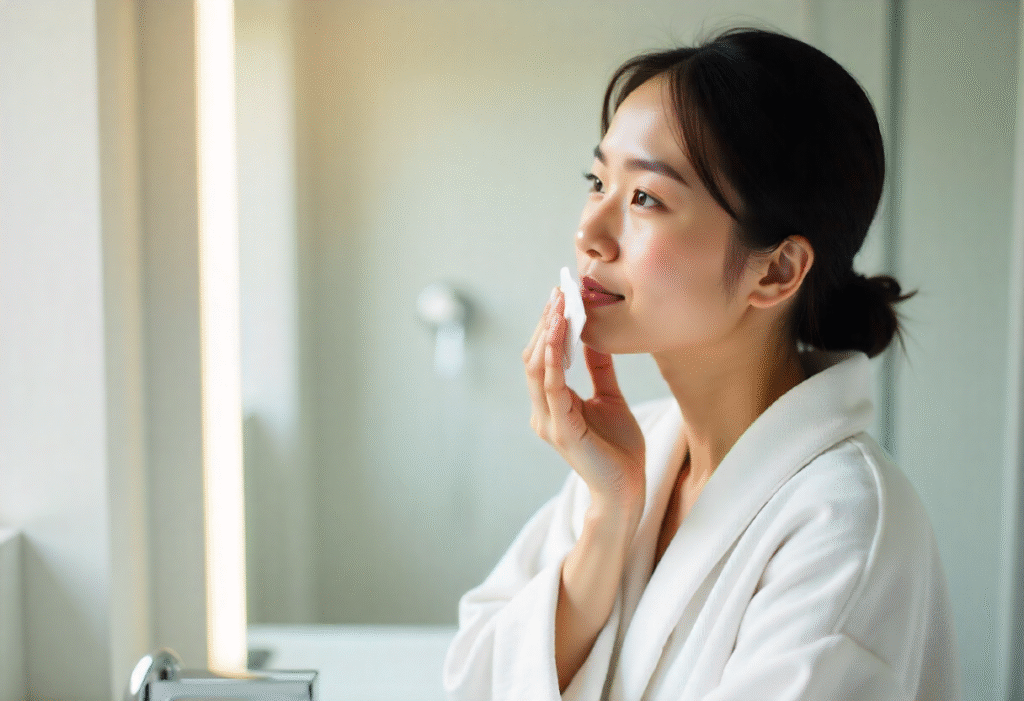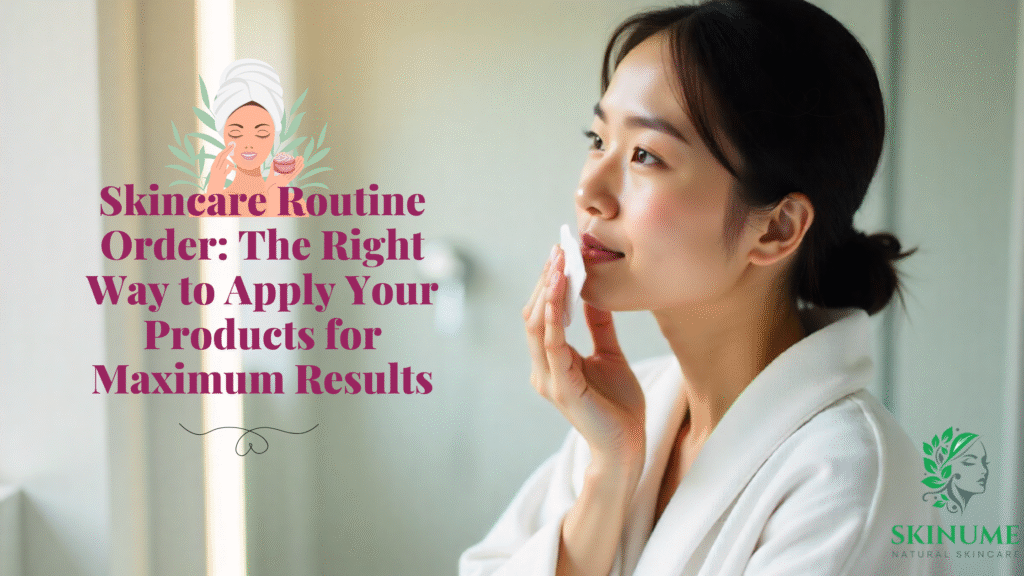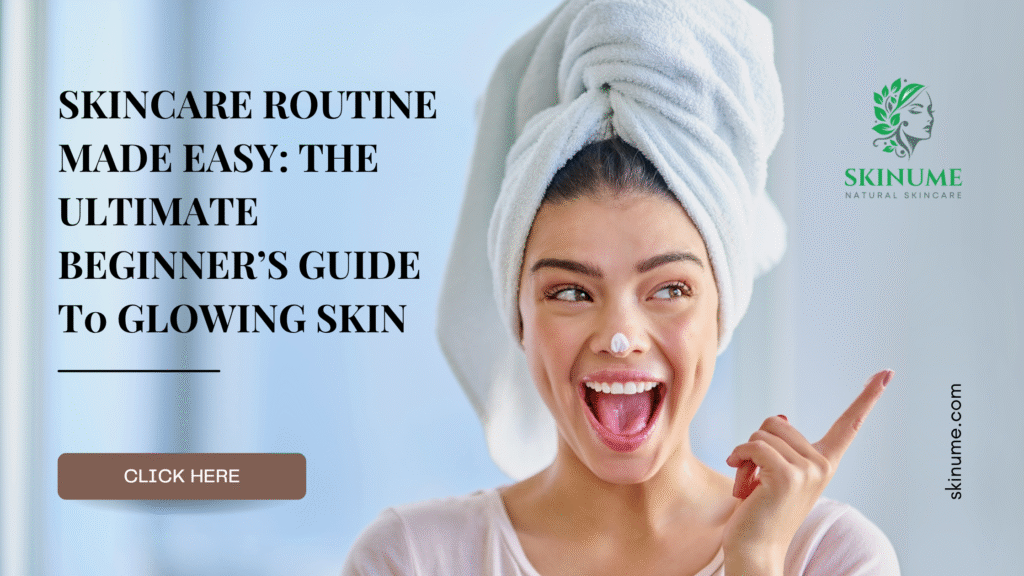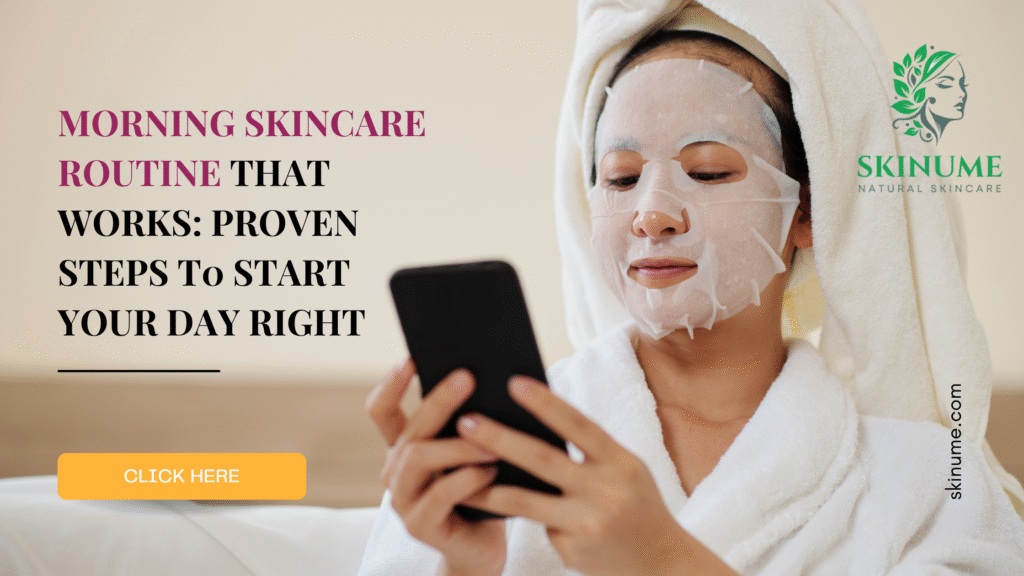Table of Contents
Introduction: Why Skincare Routine Order Matters More Than You Think
Have you ever wondered why your skin care products do not appear to do the trick of bringing you effective results even after using the right ones? The issue might lie not with the products, but with the sequence of actions that you are using in your skincare routine.
When it comes to the use of skincare, the key steps refer to applying them in the right order to absorb, produce the desired effect, and see the difference. Imagine your skin as a sponge: it has its limits to what it can take in at one time, and it has to be able to take it in through the layers as well. Using layering in the incorrect sequence may cause ingestible wastage of the products, blocked pores, among other things, making the skin irritated.

No matter what kind of secondary steps you have, whether that be the simple three-step routine or the more comprehensive 10 step regimen, the order of applying the right products in the correct order of a skincare routine will transform the way every single product that you enjoy, whether that be your cleanser, serum, and sunscreen does what you want it to do.
In this guide, you’ll learn:
- The golden rule of layering products
- Step-by-step skincare AM and PM
- What are the mistakes to be avoided with layering?
- and suggestions on how to make your skin-type-specific adjustments to your routine
It is time to demystify your skincare regimen and create a routine that will finally work.
The Golden Rule of Skincare Layering: Thinnest to Thickest
What This Rule Means and Why It Works
In terms of using skincare, there must be a sequence. The global golden rule? Use the thinnest to the thickest products. That way, the products that are more lightweight (toners, serums) have time to sink into the skin without drying, and then you can go over everything with heavier creams or oils.
Proper layering should ensure maximum absorption and performance, such that active ingredients should be able to penetrate through the skin without other thicker layers hindering them because it was added on too early.
The Influence of Molecule Size and Absorption on the Effectiveness of the Product
The ingredients of good skincare can be highly effective when used under the appropriate conditions. As another example, serums contain small molecules to penetrate deeper into the skin. You can have a thick moisturizer; it forms a physical barrier and prevents these actives from doing their thing.
- Lame -> powerful push through
- Heavier Frisk > Moisture lock and protection on the surface
Check Out: Nighttime Skincare Routine for Glowing Skin That Actually Works.
Exceptions to Know (Like Retinoids and Oils)
Although the thinnest to thickest rule is an effective rule, exceptions take place:
- Retinoids: These are usually applied as cream or oil bases, but when the percentage is high, one has to apply them prior to heavy moisturizers. In case you have sensitive skin, you can apply moisturizer with or after retinoid to eliminate irritation.
- Face Oils: Please note that face oils will feel lighter, but they are occlusive in that they create a barrier. These are always to be put on last unless it is an overnight mask.
AM vs. PM Skincare Routine Order: What Changes and Why
Key Goals of AM vs. PM Routines
- Routine Morning Skincare: It is about protection only. You would like your skin to be ready to tackle the UV rays, pollution, and outdoor pressures.
- Night Skincare: Repair and renewal are the targets. You regenerate your skin during sleep, meaning that this is the ideal time to do treatments such as retinol and exfoliants.
Products Exclusive to Each Routine
- Just sunscreen: Sunscreen, and products containing antioxidants (Vitamin C, etc.).
- Acids (AHAs, BHAs), night creams are heavier at night compared to those during the day.
Sample AM Skincare Routine Order
- Cleanser
- Toner or Essence
- Anti OXIDATION SERUM (e.g. V.C )
- Eye Cream
- Moisturizer
- Sunscreen
Sample PM Skincare Routine Order
- Makeup Remover (if needed)
- Cleanser
- Toner
- Treatment Serums (Retinol, Acids)
- Eye Cream
- Moisturizer
- Facial Oil or Overnight Mask (optional)
Step-by-Step Skincare Routine Order for the Evening (PM)

The routine you go through in the evening is that time when your skin comes out of defense mode and goes into repair mode. It is an ideal moment to use actives, seal and trapping moisture, and saturate your skin. To get the best possible results, follow this routine:
Step 1: Makeup Remover or Oil Cleanser – Melt It All Away
Use an oil makeup remover or micellar water to take away sunscreen, makeup, and excessive sebum.
- Sweating: the process helps make sure that whatever you find in the second go has a chance of cleaning your skin.
- Oily skin/acne-prone skin: Light and non-comedogenic cleanser oil/balm.
- With dry/sensitive skin: Remove a balm that is free of parabens and fragrances/ a milk cleanser with a tissue and clean by hand.
Step 2: Water-Based Cleanser – Finish the Cleanse
Clean with a gentle water-based cleanser that knocks off any grime left over.
- You should find a formulation that is sulfate-free, has its pH balanced to prevent stripping the skin.
- Cream cleansers are great for dry types of skin, whilst foam or gel types are ideal to the oily types.
Step 3: Exfoliant (2–3x a Week)
This process is not a nightly thing, but it is an essential skin glow.
- Chemical exfoliants (AHAs or BHAs) come in handy in the clearing of blocked-up pores, discoloration, and texture.
- These scrubs are made of physical exfoliants, which are too rough on the skin- best avoided, especially on any sensitive skin.
- Optimal use is after cleaning and before toners/serums on dry skin.
Step 4: Toner or Hydrating Mist
Toners should be complementary at night, but nice hydrating toners can help soothe post-exfoliation complexion and prepare it to receive care.
- Toners that contain aloe, rose water, hyaluronic acid, or glycerin are the best to use.
- Mists are also a refreshing experience, particularly in hot climates or even dry weather.
Step 5: Treatment Serums (Retinol, Acids, Spot Treatments)
The best thing is to use strong treatments like retinoids, AHAs, BHAs, or even spot treatments at night.
- Otherwise, use on dry skin, unless directed to do otherwise, as specifically pointed out.
- New actives should be patch tested to avoid a reaction.
- Apply a thin moisturiser under or over buffer retinol, accordingly.
Step 6: Eye Cream – PM Formulas for Repair
Find an eye inhibitor, which will reverse the signs of fine lines, puffiness, and dark circles.
- The magic ingredients: peptides, caffeine, ceramides, and hyaluronic acid.
- Gently, with the ring finger–delicately, as it were.
Step 7: Night Cream or Moisturizer
Lock down in all the other layers and treat your skin to its hydration requirements so that it may receive repair conditions overnight.
- Seek creams and lotions that contain ceramides, niacinamide, squalane, or peptides.
- Oily skin creams are based on a gel form, whereas dry skin creams are thicker balms or cream formulations.
Step 8: Optional – Facial Oil or Sleeping Mask
Seal everything in with moisturizing facial oil or with an overnight mask to increase glow.
- Oils (e.g., rosehip, marula, jojoba) are the last-they create an occlusive layer.
- Further hydration and healing may be done by taking sleeping masks 2-3 times a week.
Skincare Routine Order for Special Products (Masks, Tools, SPF Reapplication)
When to Apply Sheet Masks, Clay Masks, or Peels
- Clay mask: This should be done once or twice a week, between the cleansing procedure and application of serums, as well as toner.
- Sheet masks: These would go between the toner and the serum/moisturizer.
- Peels: Rather than exfoliants, and once a week at most unless prescribed by the doctor.
How Facial Tools Fit into the Routine
- Applications: After applying serum or oil, the use of jade rollers, gua sha, and facial massage tools can be applied when the skin is slip.
- They assist in lymphatic drainage, absorption of products, and swelling.
Where in the Routine to Reapply SPF During the Day
- The final part of your morning regimen should be SPF.
- Apply again every 23 hours during the day: powder SPF, setting sprays, or SPF sticks will make it convenient (over makeup, too).
Tips to Avoid Layering Mistakes

Products That Cancel Each Other Out
- Vitamin C + Niacinamide: This is now safe, but they may not be compatible when skin sensitivity is used as a primary concern point.
- Retinol + AHAs/BHAs: On skin that is not very sensitive, retinol can be too harsh to combine with AHAs/BHAs–use alternating nights instead.
Avoiding Ingredient Conflicts
- Unless you are sure that your skin can handle it, it is best not to layer actives.
- Stay balanced in your routine, drink water, and boost your barrier when taking care of your skin.
Understanding Skin Reactions vs Irritation
- Feeling numb: This may take only a few seconds and is usually normal (particularly with acid).
- Burned after, itching, peeling, long-term redness: A symptom to stop and re-evaluate.
- Launch just one new product at a time, and you’ll be able to identify what is working out or not.
Conclusion: Master Your Skincare Routine Order, Unlock Real Results
In the case of skincare, products are one thing, and application is another. When proper layering is applied to your products in the right sequence in your skincare routine products, the whole process acts like a chain, with the subsequent layer supporting the preceding one and the working active ingredients not getting in any way disturbed.
When you have a step-by-step routine- morning cleansing, then SPF, evening makeup remover to overnight treatments- you can not only remember, but it feels good too. You got to feel good to do what you love, and it actually works after deciphering to results after a few weeks. Individuals who are just starting and those who have expertise in skincare consider their product order as the key to healthy and glowing skin.
Keep in mind: always be consistent, listen to your skin, and make adjustments with changes of seasons or preferences of your skin. It is not concerning the use of more, but rather it is about the use of smarter.
For more info: Click Here.
FAQs: Quick Answers About Skincare Routine Order
1. What do I do in case of the incorrect application of my skincare?
There is a possibility that the misuse of the products in use prioritization can minimize the efficacy of the products themselves and even produce pilling or irritation of the skin. Let us say, putting a thick cream first can interfere with the proper absorption of a serum.
2. Is it necessary to follow a morning and evening routine?
Is it true because you require different things during the day (protection) and during the night (repair)? During the day the regime is mostly hydrating, protective (e.g, sunscreen), and during the night it is all about treatment and repair.
3. What is the time interval between skin care sessions?
And, as a rule, wait 30 seconds to 1 minute between each of these steps so that the products can absorb and, at least, avoid using serums before dense creams or oils. This prevents pilling and makes each layer, in turn, come fully into effect on your skin.



